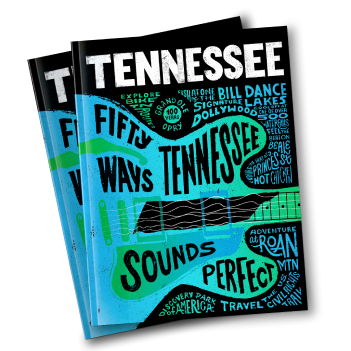Featured in this Article:

Memphis Historical Sites
Though Dr. Martin Luther King Jr.’s life was tragically cut short, his legacy lives on. In the decades since King was assassinated on April 4, 1968 in Memphis, the city has become a living homage to King. You can learn the story of King’s life, work and lasting impact through the churches where he organized local and national civil rights activism and the venues where he listened to his favorite music. Here’s a weekend itinerary to help you take it all in.
Memphis Historical Sites
Clayborn Temple / I AM A MAN Plaza
Step inside Clayborn Temple, the African Methodist Episcopal church that served as a gathering space for civil rights activists. During the 1968 Memphis sanitation workers strike, King and fellow marchers gathered at the church to rest, reflect and strategize. The church is undergoing a restoration and, once completed, will be a premier culture and arts center that connects downtown and historically Black South Memphis. In the meantime, Clayborn Temple still regularly hosts local events. While you’re in town, check out what the church is up to – you just might get to take in an arts event, live performance or tribute.
Withers Collection Museum and Gallery
The Withers Collection Museum and Gallery is home to more than 1 million images taken by famed photojournalist Ernest Withers. Withers captured historic moments of the Civil Rights Movement including the sanitation workers’ strike, the Montgomery bus boycott and King’s most powerful moments. The gallery is on Beale Street, in Withers’ final working studio. Stop there between taking in the live music to see King’s life through a new lens.
Beale Street Historic District
Visit iconic Beale Street, which is renowned for its toe-tapping offerings of live jazz, blues and rock. It was also home to some of King’s favorite musical styles, all of which provided him with inspiration during difficult moments. When the U.S. was segregated, Beale Street was a place where integrated bands could take the stage and make great music together. To get the full Beale Street experience, stop by the Blues Hall of Fame, and try to catch a show at the famed Orpheum Theatre – or the Halloran Centre, the Orpheum’s smaller cousin.
"The Sound of Memphis" Mural
Soak in some of the Memphis art scene by taking in the famous murals along Barboro Alley and South Main Street, like “Sound of Memphis” created by artists Damon Lamarreed and Pugs Atomz. Pieces inspired by music, the Civil Rights Movement, and the heartbeat of the city will keep you inspired. Don’t forget to bring your camera for this one.
The Four Way
When it's time for lunch, head to The Four Way for authentic and delicious soul food with a deep history. The Four Way has built its legacy one plate at a time, serving mouthwatering fried catfish, chicken, mac and cheese, cornbread dressing, boiled okra and more since 1946. In the early 1960s, the Four Way one of the few places in Memphis where integrated diners sat together. The restaurant became a favorite for Civil Rights Movement leaders Martin Luther King, Jr., Al Sharpton and Rev. Jessie Jackson.
National Civil Rights Museum
The National Civil Rights Museum was built directly into the Lorraine Motel, where King was assassinated. The motel was known as a safe space for African American travelers during the Jim Crow era and hosted legends like Nat King Cole and Jackie Robinson. When you visit, you’ll catch a glimpse of how the motel looked on that day in 1968, complete with ‘60s-era cars in the parking lot. A wreath hangs from the balcony in front of Room 306, where King lost his life, and you can see a view of the room exactly as King left it. Inside the museum, you’ll explore 400 years’ worth of American civil rights history. The museum includes exhibits highlighting the ’50s bus boycotts that helped ignite the civil rights movement and the Black Arts Movement of the 1960s and 1970s.
Slave Haven Underground Railroad Museum
Once known by many as a stop on the Underground Railroad, you can descend into the dark, damp cellar and peer through the trap doors and hidden passageways where slaves looking for a free life were harbored. Throughout the house are photos and realities told of slavery, segregation and cultural racism. The Slave Haven Underground Railroad Museum is currently closed. Check their website for continued updates on restoration and future opening dates.
Stax Museum of American Soul Music
The Stax Museum of American Soul Music is the perfect place to get lost in music history. The museum is on the former site of Stax Records, the label that pioneered Southern soul and brought us legends like Otis Redding and Isaac Hayes. In King’s era, Stax Records wasn’t just famous for its incredible tunes – it was also known for being run by an integrated team, which was a groundbreaking decision in the segregated 1950s. Today, the museum will take you on a journey through Memphis’ finest musical moments. (Go ahead, dance around in the exhibits.) Next door, you can check out the Stax Music Academy, where today’s music students hone their skills to become the legends of tomorrow.
Memphis Rock 'n' Soul Museum
The Memphis Rock ’N’ Soul Museum will take you on an invigorating trip through the city’s musical past. Soak it all in, and when you’re done, rent the museum’s audio walking tour of Beale Street, which takes you back in time to life 100 years ago on Beale Street as a thriving center of African American culture.
Memphis is full of historical sites not to be missed. While in the city, add these stops to your itinerary for a time of learning and reflection. Discover more Tennessee history sites and plan your trip.
6 Cozy Places To Eat in Tennessee
Grab a warm drink and soak in the comforting atmosphere of these restaurants, wineries and more.






























